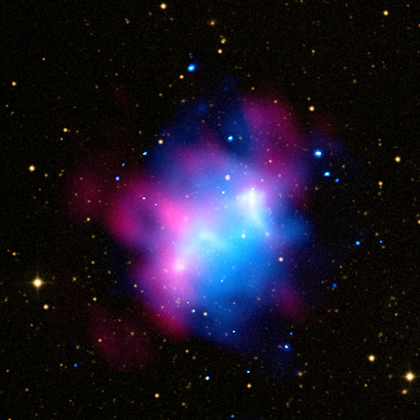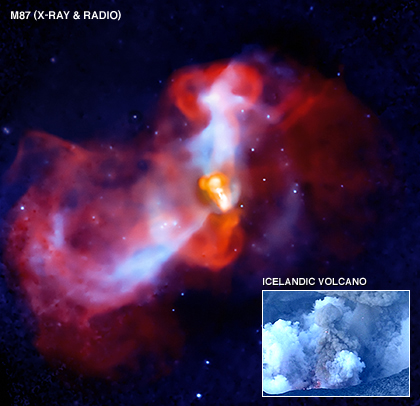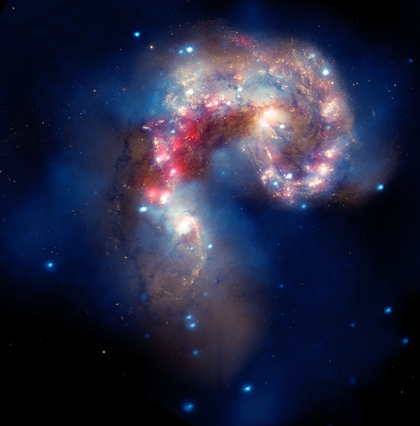Spectrum of young extrasolar planet yields surprising results
Updated: 2010-08-31 00:00:00
The data indicate that young gas-giant planets are extremely cloudy.
 This is a composite image of the northern part of the galaxy cluster Abell 1758, located about 3.2 billion light years from Earth.
This is a composite image of the northern part of the galaxy cluster Abell 1758, located about 3.2 billion light years from Earth. In a fun Q&A piece, the HHMI Bulletin asked four researchers "What 'For Dummies' book are you most qualified to write?"
In a fun Q&A piece, the HHMI Bulletin asked four researchers "What 'For Dummies' book are you most qualified to write?" At the 38th annual SLAC Summer Institute, more than 150 graduate students, postdocs and researchers got an in-depth look at "Neutrinos: Nature's Mysterious Messengers" -- and built social bonds that will sustain them throughout their careers.
At the 38th annual SLAC Summer Institute, more than 150 graduate students, postdocs and researchers got an in-depth look at "Neutrinos: Nature's Mysterious Messengers" -- and built social bonds that will sustain them throughout their careers. The Italian physicist Nicola Cabibbo, who many said should have shared the Nobel Prize for Physics in 2008 for his contribution to understanding the mechanism of quark mixing, died Monday at the age of 75.
The Italian physicist Nicola Cabibbo, who many said should have shared the Nobel Prize for Physics in 2008 for his contribution to understanding the mechanism of quark mixing, died Monday at the age of 75.
 This image shows the eruption of a galactic "super-volcano" in the massive galaxy M87.
This image shows the eruption of a galactic "super-volcano" in the massive galaxy M87. Who is Edwin Hubble, the guy who gave the Hubble Space Telescope its name? Who is the mysterious guy behind the telescope?
Well, actually, Edwin Powell Hubble is not the ‘man behind the telescope’ at all. He was born on 20th of November 1889 in the US and studied Physics and Astronomy in Chicago. He then, [...]
Who is Edwin Hubble, the guy who gave the Hubble Space Telescope its name? Who is the mysterious guy behind the telescope?
Well, actually, Edwin Powell Hubble is not the ‘man behind the telescope’ at all. He was born on 20th of November 1889 in the US and studied Physics and Astronomy in Chicago. He then, [...] A beautiful new image of two colliding galaxies has been released by NASA's Great Observatories.
A beautiful new image of two colliding galaxies has been released by NASA's Great Observatories.